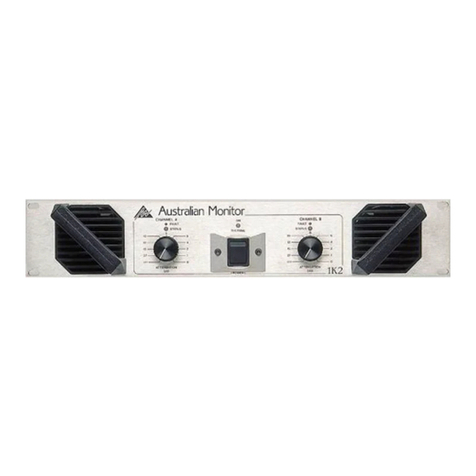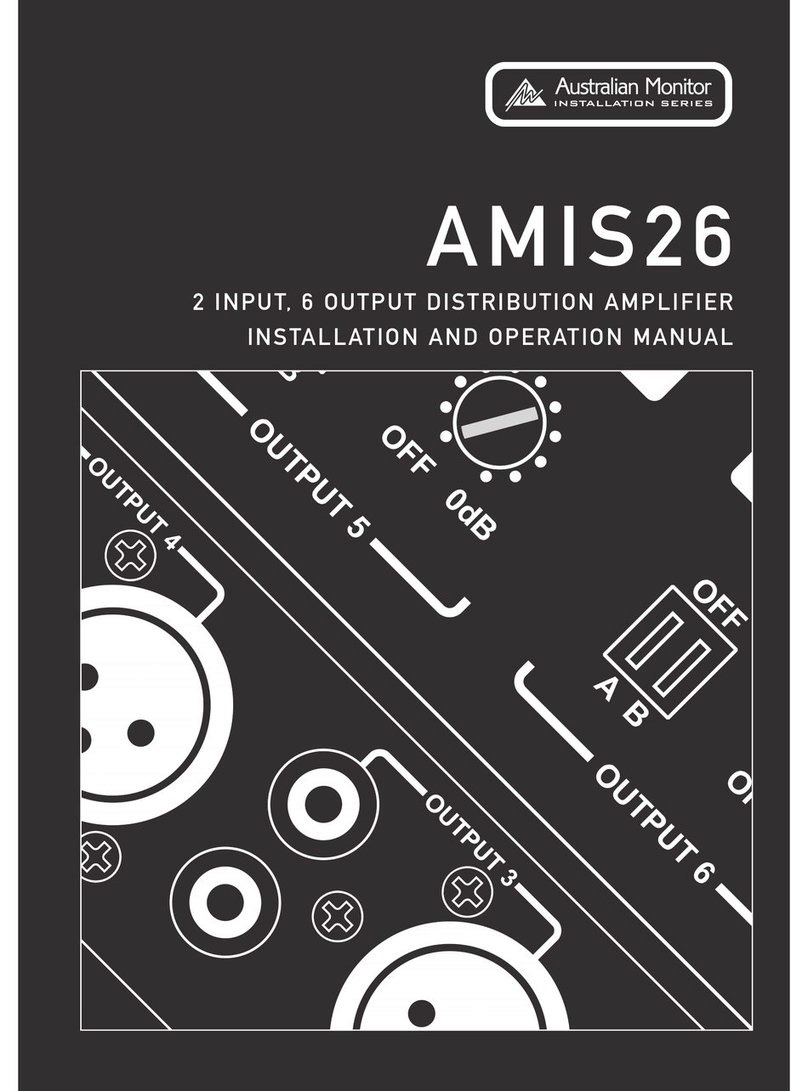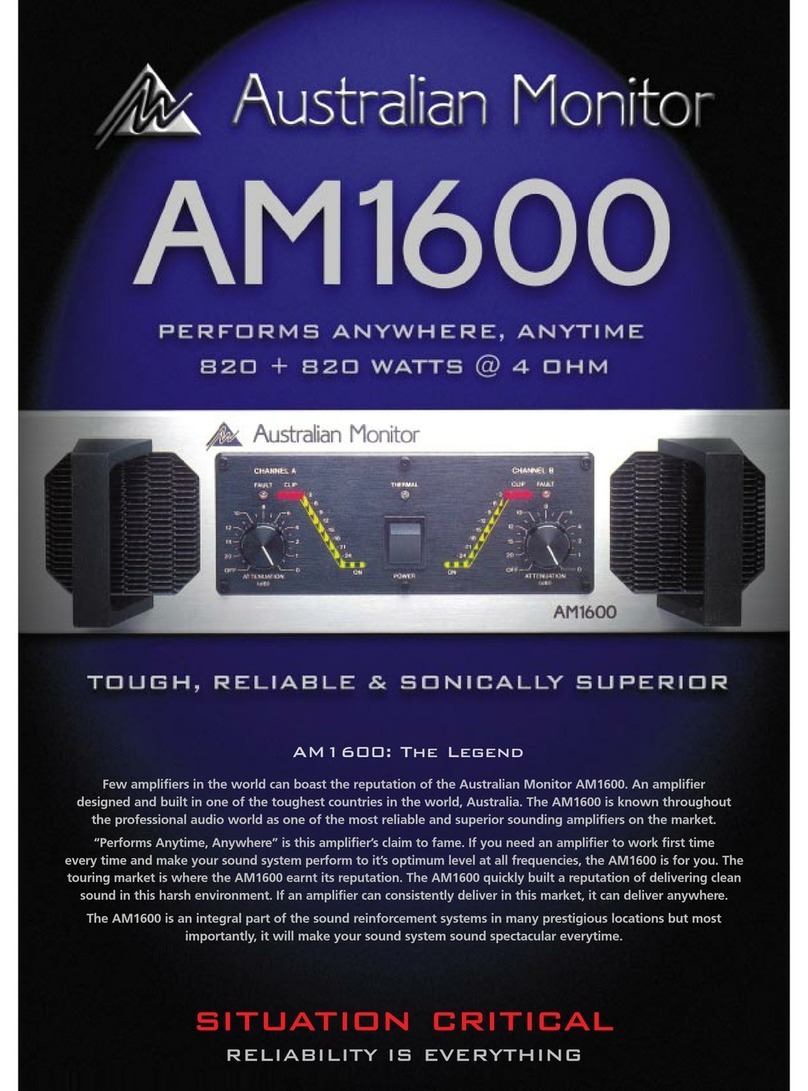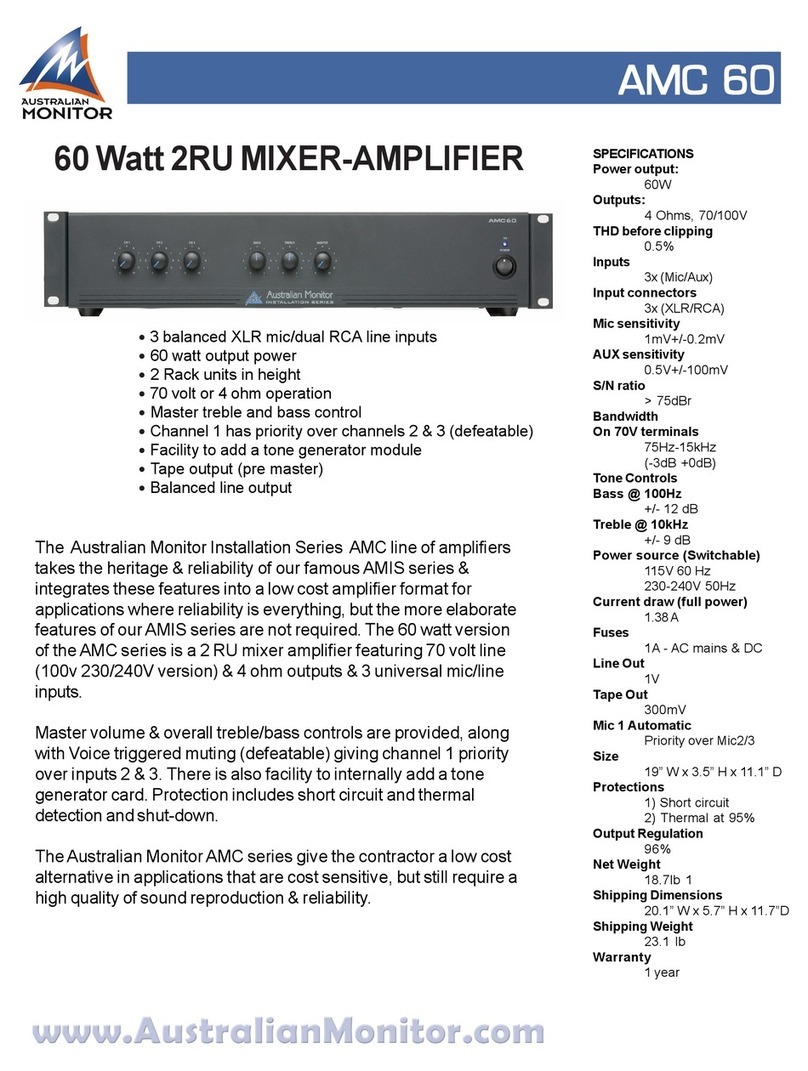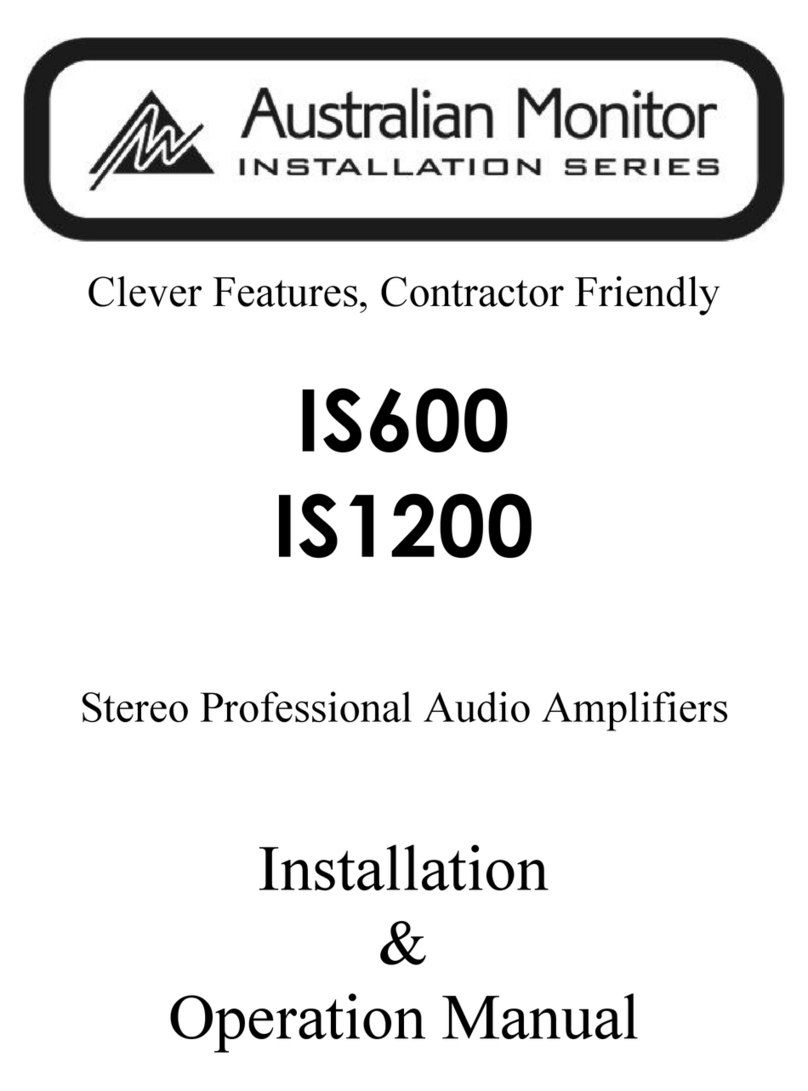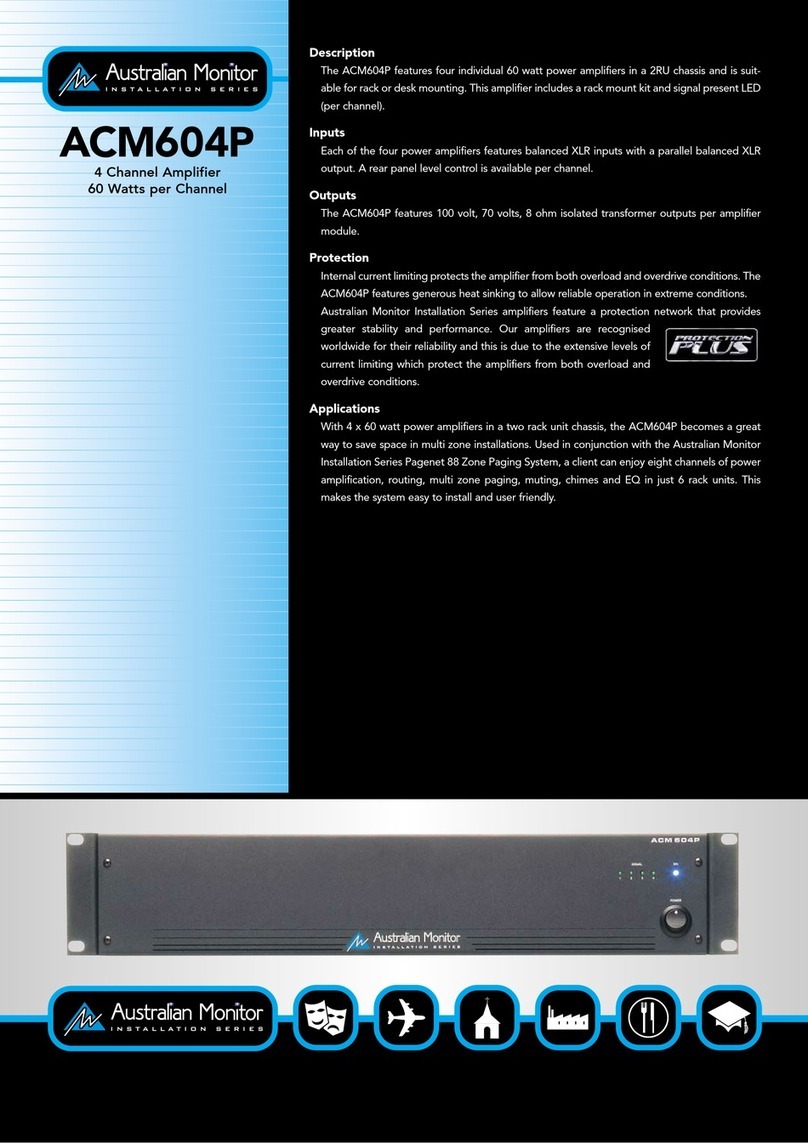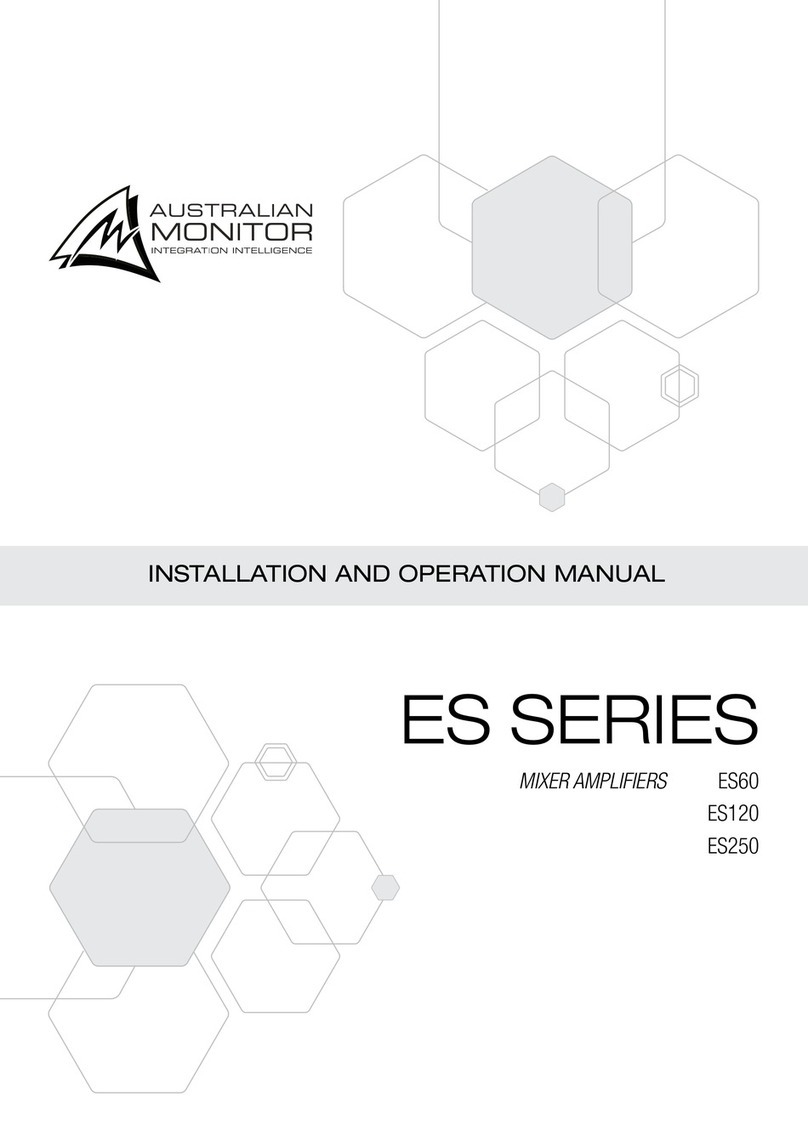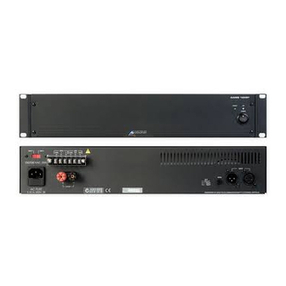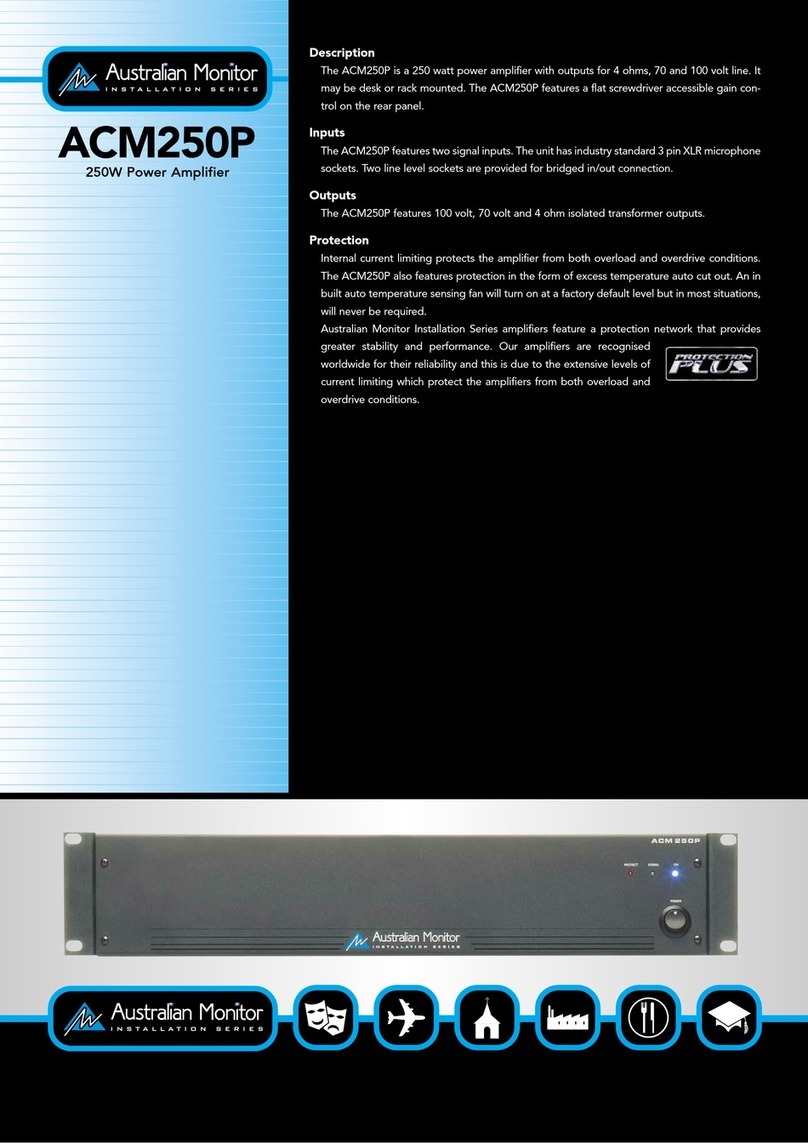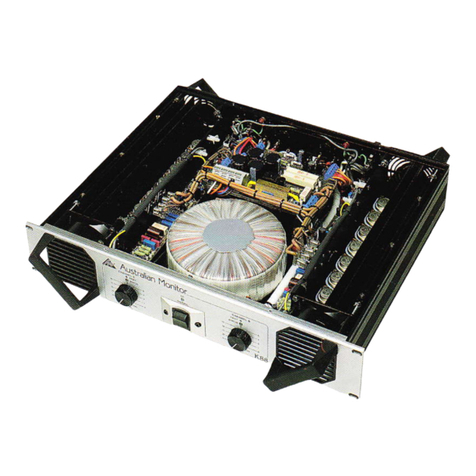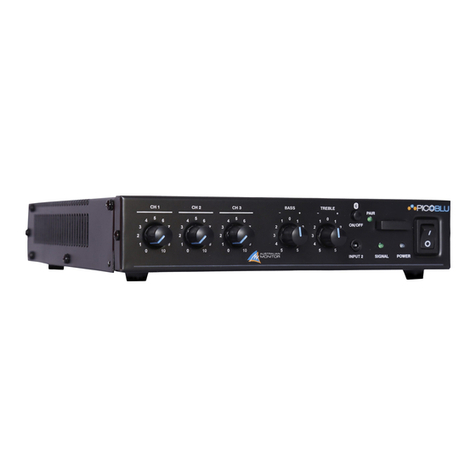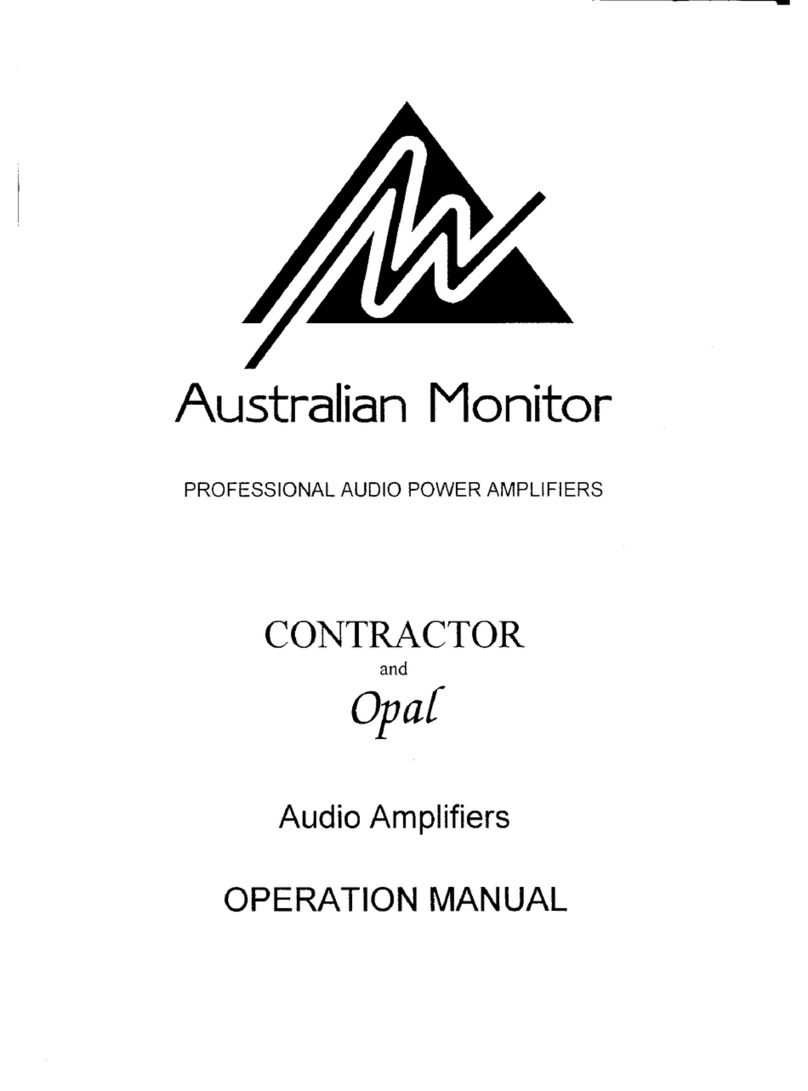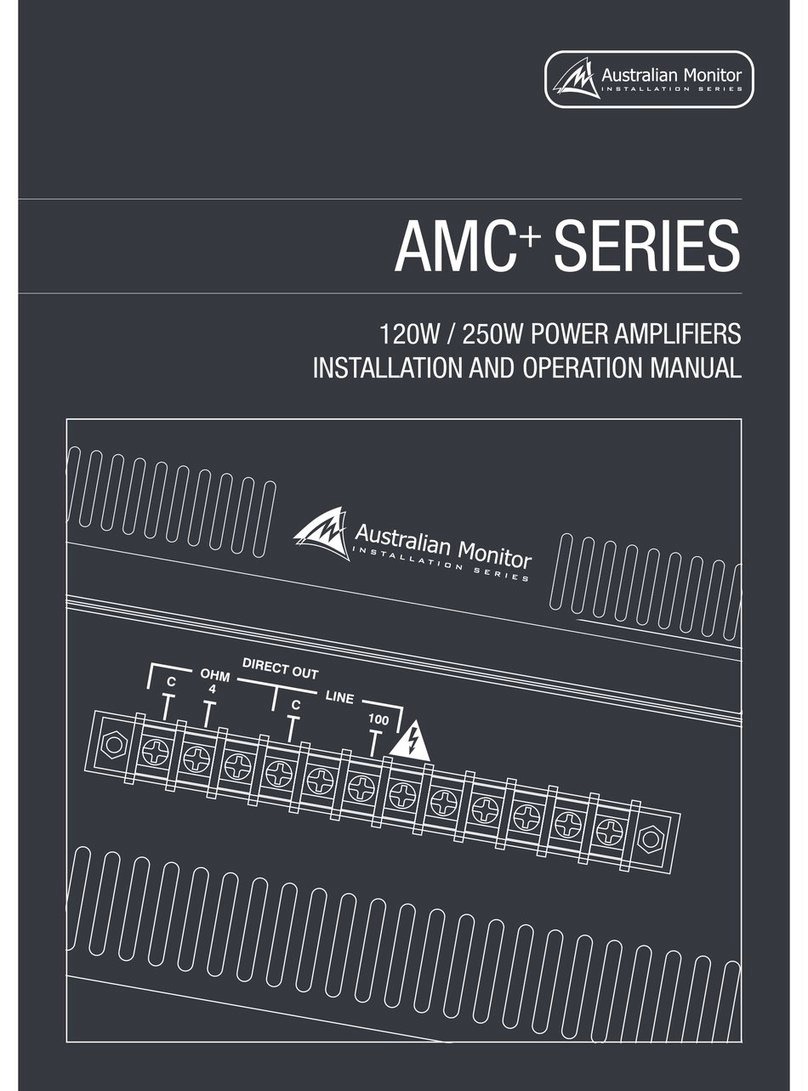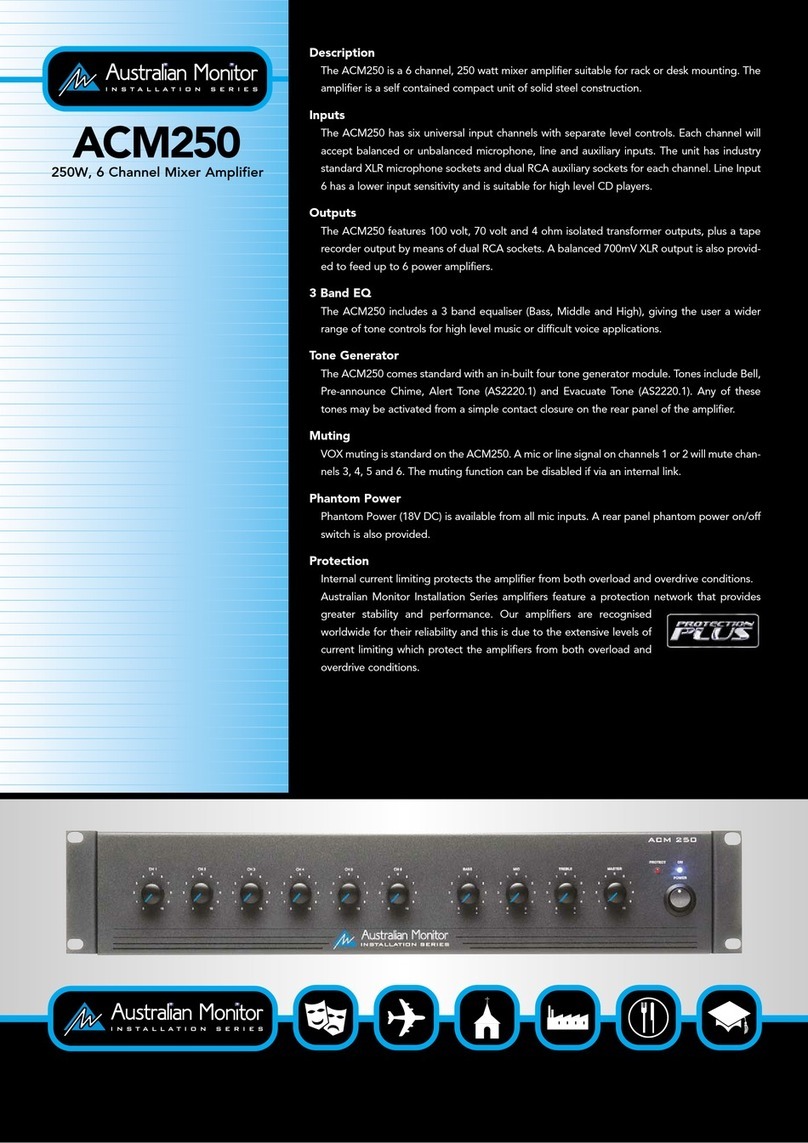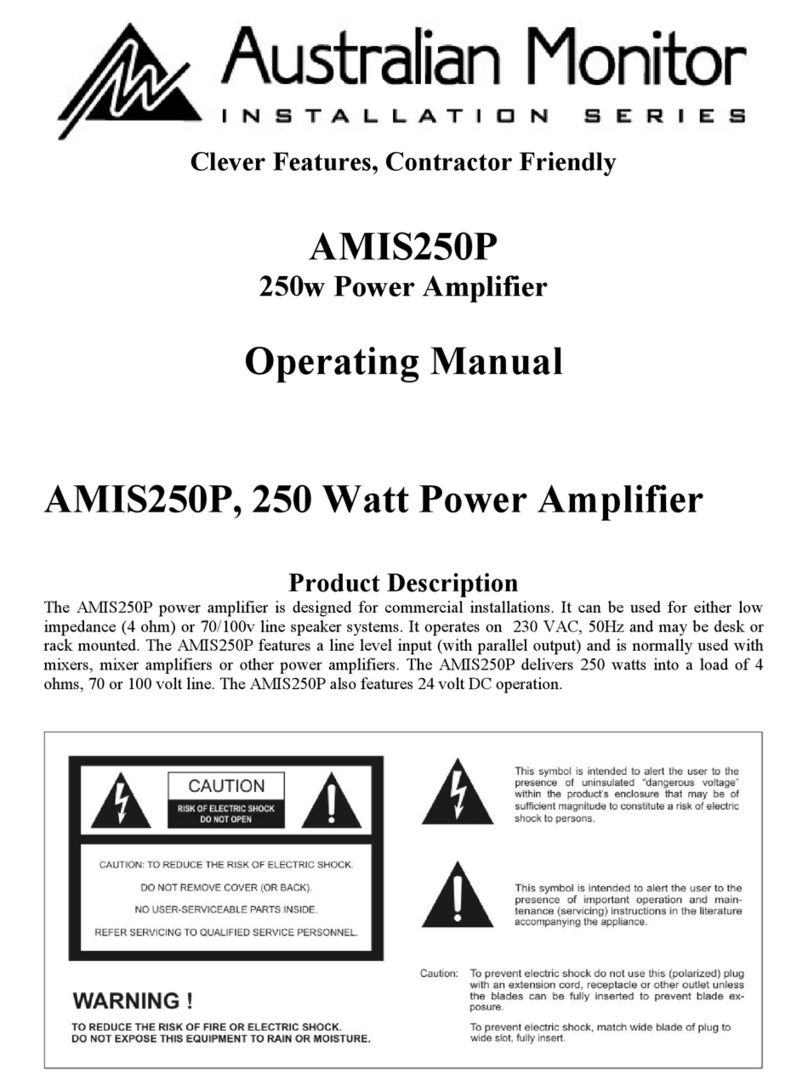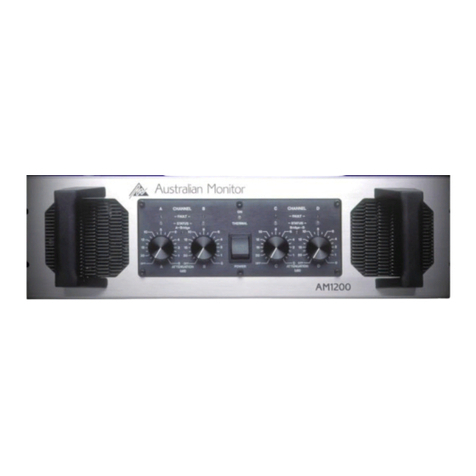Front Panel
Figure 1 shows the panel layout of the AM1600. The
functionsofthecontrolsandindicatorsareasfollows:
1.Attenuator
Levelcontrol foryouramplifierisprovidedbya21
positiondetentedpotentiometerandindicatesgain
reduction in decibels from the 0 dB position
(maximumgain,noattenuation).
2. VU Meter - Status Indicator
LevelIndication(seeinsert-1)
Eachchannelfeaturesavariable10segmentdisplay
showing the actual power/volume level available
beforeclipping(takingmainssupplyandloadduty
intoaccount).
Thedisplayiscolourcoded,andcalibratedin3dB
increments.
The10LEDs are:
Green = -27dBto-21dB
Yellow = -18dBto-6dB
Red = -3dBandthetwoLEDsindicating
the clipping point.
PowerOnIndication
Two Green LEDs either side of the mains switch
(above the "ON" legend) are used to indicate that
theunitison.Thefirst GreenLEDindicatesthe15
Volt preamp supply is present (the left hand side
displayshows-15V,andtherighthandsideshows
the+15V).
The next LED outwards is also a supply indicator
and shows that the Positive High Current Output
Railisavailabletothecorrespondingchannel.
NOTE:Theamplifierisnotdamagedbyrunninginto
clipping,butspeakersmaybe.Tomaximisethelife
of your speakers, try to keep clipping infrequent.
3. Power Switch
PresstheswitchDOWN forpowerON andUP for
power OFF. At start-up (turn-on) the input to the
amplifier is muted by 30dB for approximately two
seconds.
4. Thermal Indicator
Whenswitching the amplifieron, this redLED will
flash momentarily, indicating correct operation of
the Mains In-Rush Current Suppression circuit.
AfterestablishmentofInrushCurrentSuppression
circuit the LED will extinguish. This LED will not
illuminateduringnormaluseoftheamplifier.
In the advent of a thermal overload this LED will
illuminateredindicatingthattheinternaloperating
temperatureofoneorbothamplifierchannelshas
exceededasafelevelofoperationandthe amplifier
willbeshutdown.Thefanswillcontinuetorunand
oncetheamplifierhascooleddownsufficiently,the
amplifierwillstartupautomaticallyprovidingInrush
CurrentSuppressionandinputsignalmutinguntil
establishment of the amplifier after which it will
returntonormaloperatingmode.
NOTE:Youshouldalwaysensurethatthefangrille
iskeptcleanandfreefromthebuildupofdustand
lint.Thiswillensurelongeroperationofyouramplifier
and reduce the possibility of it prematurely going
intothermalshutdownmode.
5. Fault Indicator
ThisamberLEDwillilluminatewhenafaultcondition
exists.
The fault detection circuit monitors the difference
betweendriveandoutputinyouramplifier.
Ifyouhaveashortonthespeakeroutput(orablown
negativerailfuse)theLEDwillflashbrightlyinsync
with the programme. This LED will also flash with
programmepeaksforgrossoverloadsoriftheload
is 2 ohms or less.
The circuit has two stages of operation:
1.Itwillprovideindication(e.g.grossoverload)but
does not affect the input signal (a faint flash).
2. It will indicate and mute the input signal (e.g.
shorted output) (brightly flashing or permanently
on).
Intheadventofafailurethedisplaypanelrevertsto
a fault display to assist in diagnosis of the fault.
- The VU meter will light up fully and the Positive
Output Rail LED will extinguish if the positive
supplyrailisnotavailable(checkrear+verailfuse).
- The fault Led will glow brightly if the Negative
OutputRailisnotavailable(checkrear-verailfuse).
- Failure of the pre-amp supply will cause the
amplifier to be muted and indicator LEDs to be
extinguished.
Controls & Connectors 7
